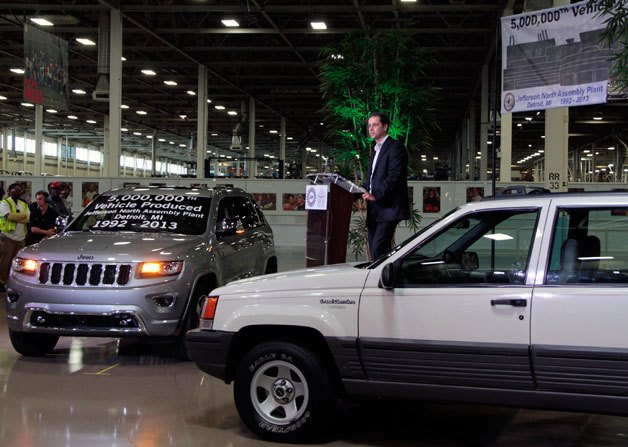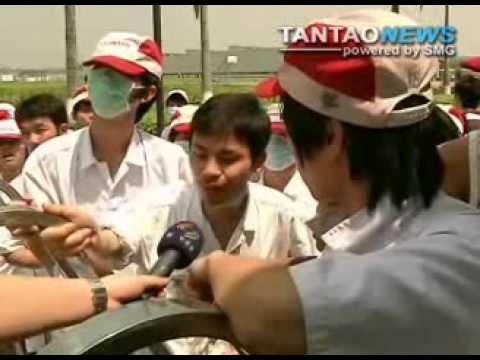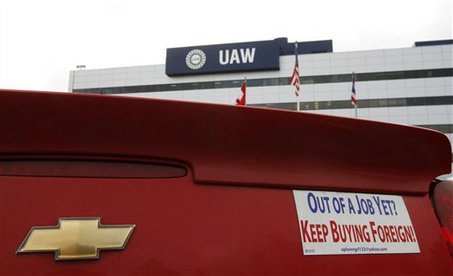#Wages
More Ford Production Heads South of the Border, Down Mexico Way
In an announcement that’s been anticipated for months, Ford Motor Company said today it will build a small car plant in Mexico’s San Luis Potosi state.
Ford will spend $1.6 billion on the facility, which starts construction this summer and will employ 2,800 workers by 2020.
The automaker isn’t saying what vehicles it will produce at the plant, but it’s widely expected that the Focus will move to Mexico after production stops at its Wayne, Michigan facility in 2018. Offshoots of the platform, including a rumored hybrid, could also be produced.
QOTD: Skin In The Game
With negotiations between the UAW and the Big Three set to open next year, FCA head Sergio Marchionne has already fired the first shots, calling for an end to the two-tier wage system and a new pay structure, tied to profit-sharing.
UAW Backs Off Transplant Organizing Goal, Attacks Hyundai
At the beginning of this year, the United Auto Workers pledged that it would launch a campaign to organize the foreign-owned, non-union “transplant” factories in the US, threatening to tar uncooperative automakers as “human right abusers.” The campaign initially lost steam, but the UAW stuck to its pledge, re-iterating on several occasions that it would organize “at least one” transplant factory by the end of 2011. With one month left to accomplish that goal and no signs of progress in sight, the UAW has officially called off that goal. In fact, the UAW now hopes to simply pick an automaker to target by the end of 2011. Spokeswoman Michelle Martin tells Bloomberg
At this point, our hope is to make a decision about who we’re going to target by the end of the year. But obviously, we won’t have the organizing campaign completed by the end of the year.
This is not too surprising, considering the UAW announced last week that it would be focusing on dealership pickets initially rather than factory organizing. And sure enough, the first dealership picket has begun, targeting Hyundai dealerships. And yet, says Martin
This has nothing to do with the domestic organizing campaign. Hyundai is not the target.
Huh? If the UAW is not committing to organizing Hyundai’s assembly workers, why picket Hyundai dealerships?
Is China's Cheap Labor A Thing Of The Past?
The prospect of a Chinese auto industry growing at insane speed thanks to a booming market and resiliently low wages has long kept auto industry execs up at night, most notably inspiring Sergio Marchionne’s acquisition of Chrysler. But basic economic principles dictate that you can have a high rate of growth or low wages… but not both. Growth inevitably drives inflation, which drives up wages, which in turn slows growth. And according to a report in the Wall Street Journal [sub], that dynamic is already taking hold.
Jae-Man Noh, head of Hyundai’s joint-venture operations in China, said average manufacturing-worker wages in China—about 27,000 yuan ($4,200) a year per worker in 2009—are likely to double by 2015 from current levels.
Auto makers are expected to be affected as much as other industries by the trend, if not more, Mr. Noh said, adding that wage costs for many foreign auto manufacturers already have doubled in less than a decade. He said that a rival foreign auto maker that Hyundai has researched has seen worker wages in China rise to 49,000 yuan a year per worker in 2010, up from 24,500 yuan a year in 2003.
“We need to let go of our perception that the Chinese market is a low-cost production base,” Mr. Noh told a group of reporters at Hyundai’s office in Beijing. He didn’t offer specifics on Hyundai’s wage costs in China.
And though the laws of supply and demand made this development inevitable, the story of the decline of China’s low-wage manufacturing base is a lot more interesting than you might think. After all, economic and historical forces may seem mechanical in the abstract, but on the ground level they work in dramatic, disruptive ways.Who's Unhappy About Higher Wages, Stronger Currency in China? The Japanese. For Starters
It stands to reason that Japanese car makers would rejoice over rising wages in competing China and over an appreciating Chinese currency. Rising wages make production there more expensive, a rising Yuan makes exports more expensive. Both should give the Japanese more breathing room. That reasoning is falling by the wayside. The Nikkei [sub] reports that these developments pose ”serious threats to Toyota’s profitability in China, strategic challenges that other Japanese companies must also deal with.” Just goes to show that you need to be careful what you wish for. And wait who else should worry.
UAW Fires Back On Wage Parity
Yesterday, we greeted news that Detroit had reached wage parity with transplants by noting that it hardly makes the UAW look great in the eyes of its membership. Sure enough, UAW boss-in-waiting Bob King is firing back in today’s Detroit Free Press, arguing that a return to a 16m unit market would yield “astronomical” profits to GM and Chrysler. As a result, he said,
There was equality of sacrifice, there’s got to be equality of gain. It’s our responsibility to make sure that in that turnaround, our members are treated fairly
According to King, UAW members have given up between $7,000 and $30,000 per year in concessions, but wouldn’t speculate on the prospect of next year’s contract negotiations. Whether those talks will yield further concessions or a reversal in fortunes for the union depends on the economy and the membership, said King. On one point, he was less equivocal: when it comes to the one domestic automaker that the UAW doesn’t own a stake in, King and the UAW are maintaining a hard line.Center For Automotive Research: Detroit Beating The Wage Gap
Speaking at the same Detroit conference on the auto bailout that Steve Rattner and Ron Bloom attended, the Center for Automotive Research’s Sean McAlinden proclaimed the end of Detroit’s era of unsustainable high wages. In 2007, said McAlinden, building a car in North America cost GM about $1,400 more per car than it did Toyota, thanks largely to a $950 health care charge. Since then, GM’s bailout and renegotiated wage and benefit contracts with the union have actually brought GM’s hourly compensation to just under what the CAR says the transplants pay. The AP reports that McAlinden’s estimate of GM’s average hourly worker salary is $69,368 while the transplant average is $70,185. Better still is McAlinden’s prediction that
between 2013 and 2015, Toyota could even be paying $10 more per hour than GM unless the Japanese company reacts and lowers wages.
And all it took was giving the UAW a $17.5 stake in the new GM!




















Recent Comments